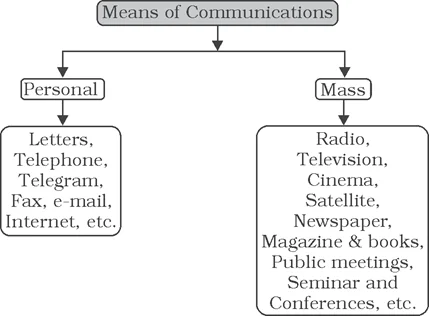![]() 8 Dec 2023
8 Dec 2023
Human beings have evolved different methods of Communication systems over time. In earlier times, the messages were delivered by beating the drum or hollow tree trunks. Initially, the means of communication were also the means of transportation. Invention of post office, telegraph, printing press, telephone, satellite, etc. has made communication much faster and easier.
On the basis of scale and quality, the mode of communication can be divided into following categories: Personal and Mass Systems

Mass Communication System: Radio, TV, and Mail Networks
|
Digital India is an umbrella programme to prepare India for a knowledge based transformation. The focus of Digital India Programme is on being transformative to realise – IT (Indian Talent) + IT (Information Technology)=IT (India Tomorrow) and is on making technology central to enabling change. |
|---|
Satellite Communication: Transforming Global Connectivity
Internet Revolution: Transforming Global Communication
Also Read: Evolution of Trade: Meaning and reasons for International Trade
<div class="new-fform">
</div>